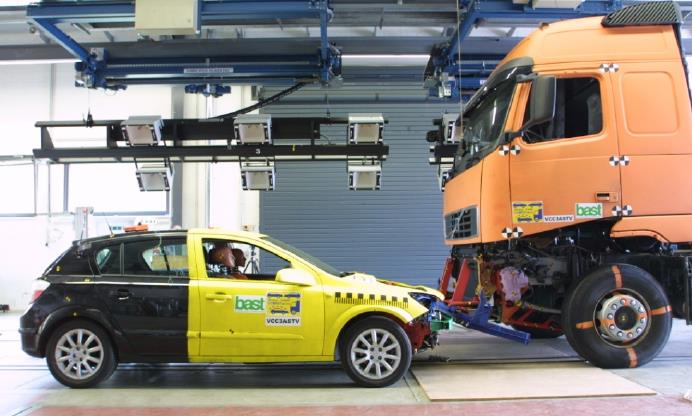
Study – Energy absorbing front underrun protection for trucks
A new study commissioned by T&E analyses how a test procedure for energy absorbing front underrun protection (FUP) for trucks can be developed. These devices could reduce the chance of being killed in a crash with heavy goods vehicles (HGVs).
Statistics show that in the European Union in 2013 around 4,000 people were killed in accidents involving heavy goods vehicles (HGVs) in excess of 3.5 tonnes. Just under half of those killed were car occupants. One of the problems in such collisions is the crash compatibility of the vehicles; trucks are heavier, their main structures are stiffer and are positioned higher from the ground than for passenger cars. Front underrun protection places stiff structures on trucks in a position intended to interact with the energy absorbing structures of cars. It is mandatory for most HGVs in the EU with the technical requirements prescribed by Regulation 93. However, the potential of HGVs to absorb energy in a crash with a passenger car has remained limited by the amount of deformation space available between the front of the vehicle and the front axle. Directive (EU) 2015/719 offers the potential to remove that limitation by allowing trucks to be longer than the maximum currently permitted provided that it does not increase the load space and it does improve safety and environmental performance.
One of the factors required to show improved safety performance is an improvement to the protection of car occupants in collision with the front of an HGV and this improvement must be demonstrated through the type approval system.
There are currently no regulatory instruments that can be used to demonstrate that approval. Transport & Environment therefore commissioned Apollo Vehicle Safety to review the available evidence in order to begin the process of defining a test and evaluation procedure that would be capable of demonstrating improved performance in a type approval test.
The review was a desk-top exercise collecting evidence from existing test procedures and past research on both car-to-truck and car-to-car compatibility. However, few FUPs have been designed based on the concept of an extended length HGV and so the analysis required considerable inference based on tests with existing designs and evaluation of the properties that are beneficial for crash compatibility.
An outline was, therefore, identified of the additional physical test and experimental research that would be required to increase scientific/*/*-/ confidence in the results and to refine the limit values proposed.
This report describes the technical work in full.
